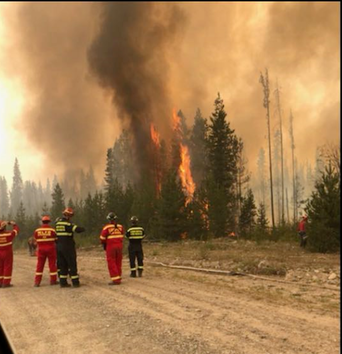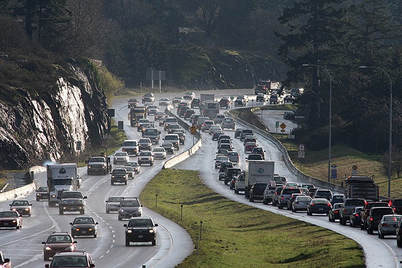 Canada will legalize recreational cannabis on Oct. 17 and the business community needs to prepare for the opportunities and challenges to come. Legalization is causing waves across all three levels of governments, from big picture concerns about crossing international borders to everyday issues such as whether cannabis retailers can operate in your neighbourhood. Breaking it down, Ottawa will continue to be responsible for criminal activities and rules regarding cultivation and processing. Provinces will regulate workplace safety, wholesaling and the retail model. In B.C., the provincial government has identified 31 smaller suppliers who will provide product to the B.C. Liquor Distribution Branch. The LDB plans to offer a range of cannabis varieties to licensed private retailers through an online sales portal. The LDB will also open B.C. Cannabis Stores, similar to public liquor stores, at various locations across the province. Local governments will play a vital role in how the public can access cannabis by deciding where retailers can locate, how they can operate within their communities and which ones to license. Education is one of the areas of responsibility that crosses all three levels of government and is being addressed federally, provincially and municipally. As Greater Victoria’s Chamber of Commerce, we work on behalf of business and advocate for regulations and policies that build good business and improve the economic vitality of our region’s entrepreneurs, employers and citizens. We want to play an active and forward-focused role in helping businesses in this emerging industry establish themselves as good members of the business community. So, with the October legalization date imminent, we have begun to work with companies that are abiding by the rules as they exist today, which means they have a business license in Victoria. Fortunately, the City of Victoria has been proactive and has developed a rigorous process for licensing cannabis retailers that is serving as an example for cities and towns across Canada. Governments are acting because public perception about cannabis has shifted. A 2016 study by Deloitte Touche shows more people support legalization than oppose it, and youth in particular believe that cannabis is less harmful than alcohol. The research also shows young people want accurate information about the effects of cannabis rather than relying on anecdotal evidence offered by their peers. Canada is now the world leader in this industry and there will be lots of ground-breaking research and development. If you’re interested in learning more, I encourage you to attend our “The Business of Cannabis” luncheon on Oct. 10, from 11:30 to 1 p.m. at the Hotel Grand Pacific. Our expert panel will include Jocelyn Jenkins, Chief Administrative Officer with the City of Victoria, and Peter Guo, BC Enterprise Risk Services Leader and BC Cannabis Industry Leader with MNP. Catherine Holt is CEO of The Chamber (Greater Victoria Chamber of Commerce).
2 Comments
 Forest fire near Fraser Lake. Forest fire near Fraser Lake. Breathing smoky air is becoming a new summer norm in Victoria. Wildfires have caused chaos and catastrophe across BC, disrupting livelihoods, communities and business, sometimes irretrievably. And it’s putting climate change top of mind for many of us. At last. What motivates humans to change? I spent many years as a management consultant and most of that work involved creating and managing change. As anyone who has tried to make big change can tell you – humans resist it. An absolute requirement, in my experience, is what’s referred to in business lingo as “the burning platform.” If people find themselves on one — literally or figuratively —they will take a risk and jump to save themselves. Anything short of that and they prefer to stay where they are. Do we have a burning platform now? Yes. Have scientist been trying to tell us for decades that we are at risk of burning? Yes. Have we jumped? Not yet. There are many, many factors that prevent us from acting on what science has tried to tell us is a compelling case for change. I don’t want to over-simplify any of that, but a significant factor is the language used to make the case matters and we have been using the wrong language for decades. You may have noticed that scientists often communicate with each other in obscure jargon. The scientific process encourages scientists to compare results and to challenge, debate and influence each other’s work — but it doesn’t lead to clear compelling public communication. Consequently, to describe the biggest crisis facing the planet, they have, over decades, used such ambiguous, cautious and neutral language that, even today, it doesn’t create a sense of urgency. Science initially labelled the burning platform “The Greenhouse Effect.” That was coined around the year 1900, believe it or not, and was followed by a long insider debate about whether the term was scientifically accurate. A much bigger problem with the name is that it’s misleading, comforting even. Greenhouses are nice. Who doesn’t like a lovely warm greenhouse full of tropical plants or tomatoes that would otherwise freeze solid in the Canadian winter? Putting our planet in a greenhouse doesn’t sound so bad. No sense of impending crisis was created by that terminology. What if it had been called “The Oven Effect?” It’s accurate and certainly more terrifying and may have resulted in public concern. No one wants to be in an oven. Simple. Sometime in the 1990s, the risk of burning started to become real, but still very little movement on the platform. Scientists rightly decided “The Greenhouse Effect” was just not convincing. So they came up with “Global Warming.” Same problem. Who doesn’t like to be warm? It’s better than being cold, any day. And for those of us living a reasonable distance from the equator, it sounds like a welcome change. Remember the constant jokes about “Global Warming” in Canada? On a particularly chilly winter day someone would inevitably say “Hey, where’s that “Global Warming” when we need it?” The words did not strike fear into our hearts. What if it was “Global Overheating”? Again, accurate, terrifying and more likely to get attention and action. So after a decade or so of “Global Warming” resulting in very little change, it was obvious another name was needed to truly express the mounting urgency. The scientific community labored to come up with something irrefutable. So now we call it “Climate Change.” You know what I’m going to say. Change…. Good change? Bad change? Big change? Little change? Isn’t change the only thing we can count on? Yet again, no urgency in the language or the response. What we really face is “Climate Chaos.” No one wants chaos. It’s clearly a bad thing. And it’s what the scientist are predicting and we are starting to experience. If we had started with “The Oven Effect,” moved to “Global Overheating” and now referred to “Climate Chaos,” it’s likely we’d be much further along in making the changes we need to save the planet and ourselves. It’s starting to feel like too little too late, but let’s try naming this crisis in accurate language that motivates big change and then, just maybe, we’ll jump. 
Catherine When is the last time you complained about traffic? Driving home from up-Island on Sunday? Trying to park downtown in the middle of the day? This morning on your commute from Bear Mountain? There’s no shortage of talk about how bad traffic is in our region. There’s also no shortage of ideas to improve things: Use the E&N corridor for buses, start a ferry from the Inner Harbour to Royal Bay, get more people living downtown so they won’t need cars, attract employers to the West Shore so workers won’t drive so far. What we do fall short on is governance. There is no regional transportation entity that can set priorities, fund them and make them happen. The Capital Regional District tried to create a regional transportation service. In March, the latest plan was defeated and the idea put on hold. It wasn’t a surprise. The CRD doesn’t have the revenue sources or expertise to run regional transportation. And, as demonstrated by the outcome of this proposal, it is often thwarted by its own poor governance design. Board members tend to act for the communities that elected them rather than the region. It’s time to move on and take a more realistic, proven approach to solving our region’s transportation issues. Thankfully, we don’t have to look any further than the Victoria Regional Transit Commission, which does a fantastic job of quietly running our bus system. Created by the provincial government as part of B.C. Transit’s services, the commission is composed of seven elected municipal representatives. They are appointed by the province to act on behalf of the whole region. The commission is effective because it has a local government perspective without squabbling over how to cut the pie into 13 pieces. Commissioners make decisions in the region’s interest, and no community can opt out of the service or the funding required to run it. So we have one bus system connecting our many communities — not three or six or 13. The transit commission is also successful because it can get the revenue it needs. It determines the budget required, and individual municipalities must pay their share. That’s bolstered by a sizable grant from the provincial government and by a legislated regional gas tax, also from the province. As well, the commission’s geographic boundaries make sense for our region’s transit users, as opposed to the borders of the CRD, which includes large rural areas, as well as Gulf Islands. So, we have a model that works for buses, but could it work for other transportation challenges? I think it would. In order for the bus system to function, the transit commission already works on high-level transportation issues, such as bus lanes from downtown to the West Shore, potential transit uses for the E&N corridor, and ways to reduce traffic and keep buses affordable through denser housing near transit hubs. But it can’t make those things happen; it has to persuade local governments to let it do them. The next step is for the provincial government to give the commission the power to do those things. Our region is heavily represented in government. Surely our local MLAs understand the urgency for Greater Victoria commuters. By scaling up the role and capacity of the transit commission, and renaming it a transportation commission, we could have a well-governed and effective agency capable of tackling regional traffic, starting with better road design, land use and infrastructure. And it could focus on outcomes, such as reducing commute times and carbon emissions, and increasing transit ridership. If you’re still not convinced, consider these questions: 1. Is it possible the Johnson Street Bridge replacement project would have been more expertly managed, fairly funded and quickly delivered if it were a project owned and run by the region through the commission rather than just one city? 2. Would we have fewer bottlenecks if proper standards were set on a designated regional major road network — space for buses, standard speed limits, an ability to accommodate all modes of travel? 3. Would bus lanes from downtown to the West Shore take fewer years to complete if there were one authority to decide to do them and fund and operate them, rather than having to deal with many jurisdictions? If you answered yes, then ask yourself: Isn’t it time to embrace this sensible and proven solution to our region’s growing traffic troubles? Catherine Holt is the CEO of the Greater Victoria Chamber of Commerce. Her column was published in the Times Colonist on July 31, 2018.
|
Archives
June 2024
Categories
All
|
Copyright © 2021 Greater Victoria Chamber of Commerce. All rights reserved.
#100 – 852 Fort St., Victoria, BC V8W 1H8, Canada | Phone: (250) 383-7191
[email protected] | Site Map
#100 – 852 Fort St., Victoria, BC V8W 1H8, Canada | Phone: (250) 383-7191
[email protected] | Site Map
Notice a typo or broken link? Please let us know so we can fix it ASAP. Email [email protected]

 RSS Feed
RSS Feed
